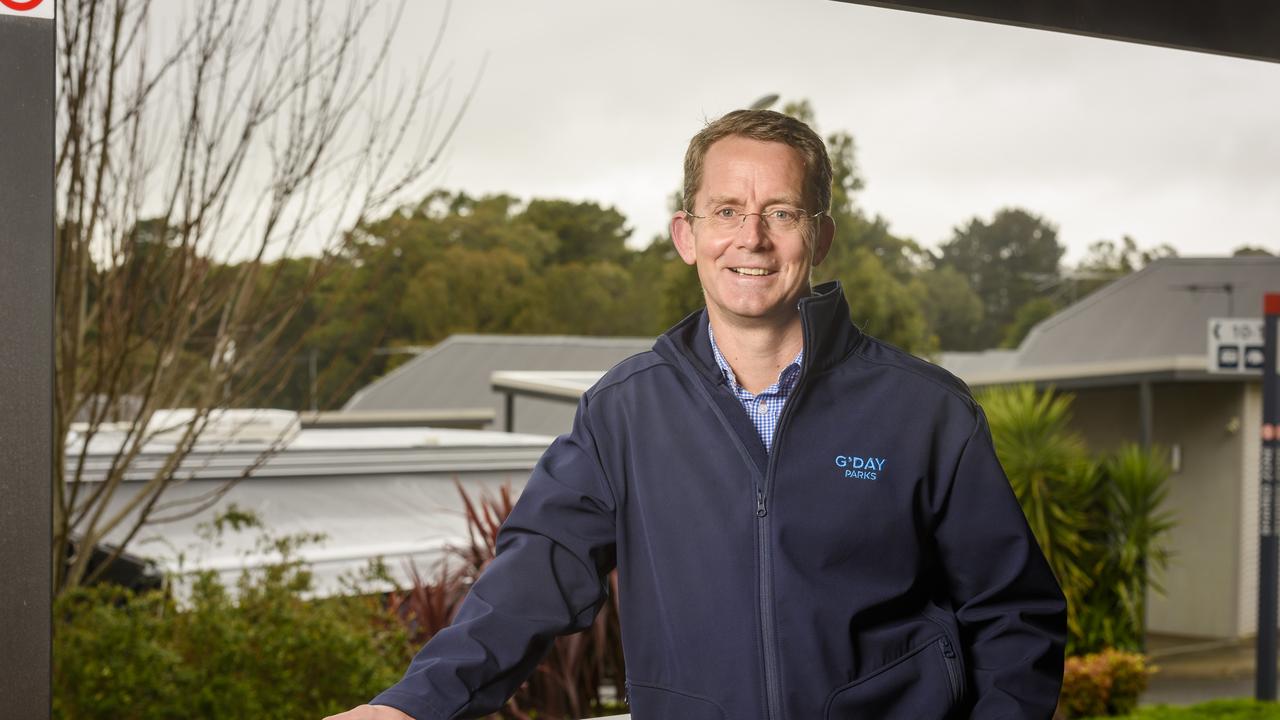Travel operators upbeat after Christmas, but say Aussies going oversees hurting inbound travellers
Tourism operators are pleased with the demand for domestic holidays over Christmas, but say a strong appetite for overseas travel is hurting the recovery.
Business
Don't miss out on the headlines from Business. Followed categories will be added to My News.
Australians have travelled across the country in their highest numbers since the pandemic, despite wild weather impacting popular destinations in Queensland, tourism operators say.
But the industry says inbound international tourism is not meeting expectations, because a lack of airline capacity, exacerbated by Australians prioritising overseas travel in the wake of the pandemic, was acting as a roadblock.
Flight Centre data shows that domestic travel bookings increased by 2 per cent from the previous year, and the Gold Coast, Ballina-Byron and Tasmania were the most popular destinations, while demand for Western Australia, Uluru and Alice Springs also surged.
The operator of Discovery Parks and G’Day Parks, G’day Group said bookings in WA were up 20 per cent from the previous year, and South Australia also did well as it saw more budget-conscious holiday-makers.
Popular destinations in Queensland, however, were affected by wild weather events. Cyclone Jasper caused damage across Far North Queensland and the temporary closure of Cairns Airport which peak body Accommodation Australia said caused occupancy rates to drop from mid 70 per cent to 30 per cent over December.
On the Gold Coast, wild thunderstorms caused widespread power outages and damage forced the region’s theme parks to close for several days.

Flight Centre chief executive Graham Turner said that the small spike in domestic tourism was dwarfed by a 15 per cent bounce in international booking over the Christmas period.
“People are still catching up from the Covid era where they couldn’t fly and are prioritising international trips,” Mr Turner said.
“It is hard to know whether this will continue but forward bookings for overseas are very strong for the northern hemisphere summer.”
Tourism Research Australia forecasts that international tourists won’t surpass pre-pandemic levels until 2025 and the recovery was only two thirds complete. Meanwhile, the Australian Bureau of Statistics reported that the number of Australians returning from an overseas holiday was only down 7 per cent from pre-pandemic levels.
Mr Turner said that the popularity of outbound travel was affecting the volume of international tourists who could enter Australia and that limited capacity and higher airfares was making the country expensive to visit.
“There is still a long way to go to get back to pre-pandemic levels for inbound tourism and how long will depend on capacity, with the big volume of Aussies travelling taking up much of the available seats,” he said.
“The limited capacity will reduce the number of tourists that come, but we are seeing more seats made available each month.”

The federal and Queensland governments are hoping to draw tourists back to far north Queensland with a $5m fund to support local operators and to offer discounted airfares to the region.
Accommodation Australia chief executive Michael Johnson said all tourism operators were operating daily on the Great Barrier Reef thanks to discounted airfares and accommodation after the region was hit with extensive cancellations in December, resulting in millions of dollars in lost revenue,
“Far North Queensland has taken a blow in recent years with the pandemic and destructive weather events, but Cairns and the surrounding areas are ready to welcome back tourists and this package is great news for the area,” he said.
Australian Federation of Travel Agents chief executive Dean Long said floods and rain that impacted Queensland resorted in cancellations from travellers who he observed had opted against rebooking into another destination.
“It was interesting that we did not see those funds get deployed elsewhere, but north Queensland is a particular destination with activities that are very unique in Australia,” he said.
“If there are disruptions elsewhere you generally swap one beach destination for another, but it is pretty hard to find another Great Barrier Reef so we are hoping that means people will look to return to the region at Easter.”

G’day Group chief executive Grant Wilckens said the summer holiday period had met expectations, but weather had dampened demand in parts of the country.
“Overall we are pretty happy with how summer has gone. We’ve hit our targets for December and will do so January, and we are currently tracking up 10 per cent from pre-Covid levels,” he said.
“Weather does impact all tourism businesses, so when we have a good hot summer then generally operators will do well, but our parks in locations that have seen lots of rain have however been impacted.”
He said more budget conscious holiday-makers were prepared to trade down from a resort to a holiday park amid higher living expenses caused by soaring power bills, grocery prices, rents and mortgage costs.
“Families are only going to be more conscious about budgets this year and we are seeing good forward booking as we are at the affordable end of the market,” he said.
“We’re seeing shorter, with two to three days more common than three to four days in the past, and those bookings are coming in much later as people make sure they have the funds to travel first.”
Over the December and January, the Qantas Group expected to fly more than 8.5 million people across 70,000 Qantas and Jetstar flights, while Virgin Australia forecast 3.3 million would travel on its network.
Originally published as Travel operators upbeat after Christmas, but say Aussies going oversees hurting inbound travellers







